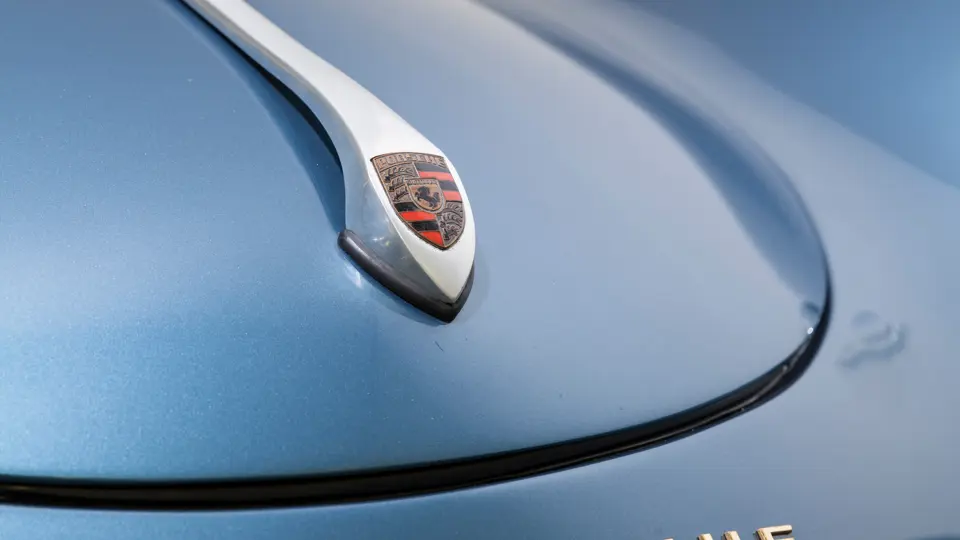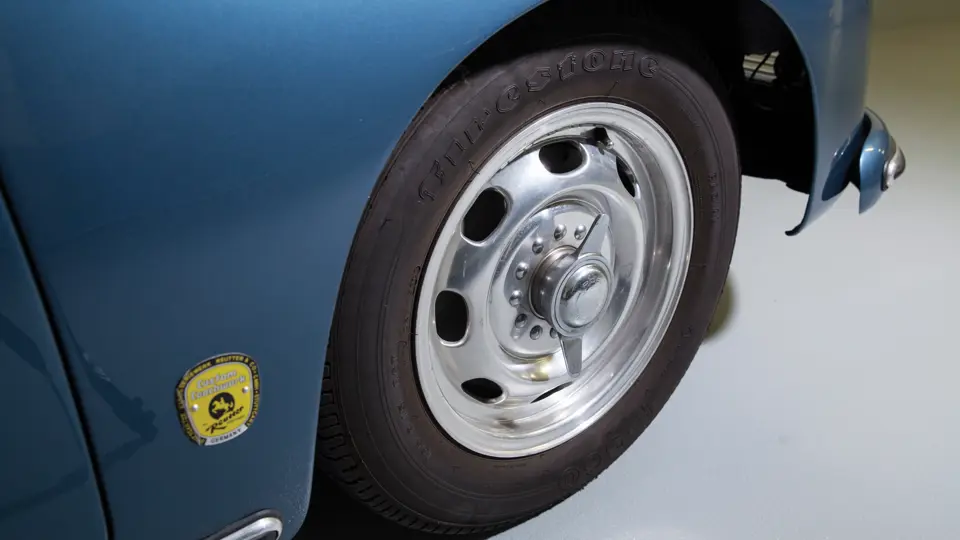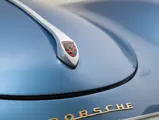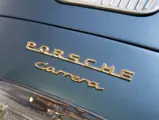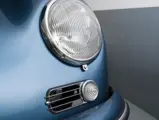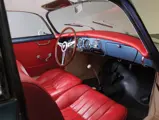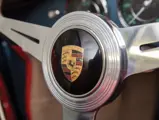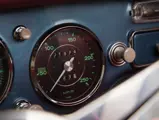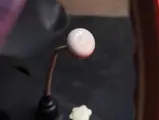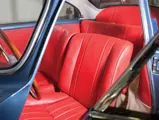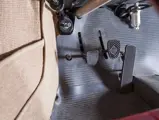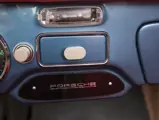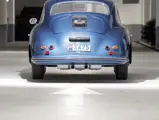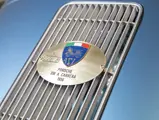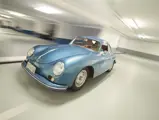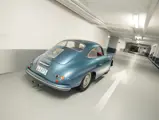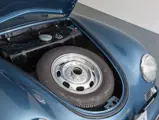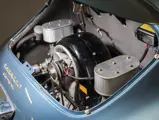
1956 Porsche 356 A Carrera 1500 GS Coupe by Reutter
{{lr.item.text}}
£302,400 GBP | Sold
{{bidding.lot.reserveStatusFormatted}}
- One of the most sought-after 356 models
- Fully restored by a marque specialist; beautifully presented throughout
- Fitted with reproduction Rudge centre-lock wheels
- Eligible for the Mille Miglia Storica and other vintage racing events
- Includes Porsche Certificate of Authenticity
100 bhp, 1,498 cc DOHC air-cooled horizontally opposed four-cylinder engine with dual Solex carburettors, four-speed manual transmission, independent front suspension with torsion bars, an anti-roll bar, trailing arms, and telescopic shock absorbers, independent swing axle rear suspension with torsion bars and telescopic shock absorbers, and four-wheel drum brakes. Wheelbase: 2,100 mm
By 1956, Porsche had manufactured 10,000 new cars and its racing credentials had been firmly established with the help of strong finishes in the Carrera Panamericana. To celebrate the Spyder’s class victories in 1952, 1953, and 1954 (the last bringing in a 1st and 2nd in class and a 3rd and 4th overall, behind the much more powerful 4.5- and 4.9-litre Ferraris), Porsche decided to install a slightly de-tuned version of the 550’s complicated 1.5-litre, four-cam, twin-plug racing engine into a limited number of production cars. A few 356 Pre-A examples were built to test the concept; the number is placed at four coupés and 14 speedsters. The new high-performance 356 A was introduced at the 1955 Frankfurt Motor Show as a 1956 model. The new model would, of course, be named the Carrera—a name that has resonated to the present day as representing Porsche’s fastest street machines.
The new 100-horsepower, Fuhrmann-designed, dry-sump, roller-bearing engine, with chrome-plated cylinder bores and 8.1 compression—down from the Spyder’s 9.5—could be ordered in all three of Porsche’s 356 A models, the coupé, cabriolet, and speedster. Along with the rest of the A series, Carreras were fitted with a new and improved Type 644 transmission with a single-piece case, with the gear shafts being installed from the front. The oil tank for the dry-sump lubrication system was mounted in the left-rear wing well, being protected from road debris by a mesh screen, which carried the car’s chassis number. A pair of Autopulse fuel pumps and a pressure-reducing valve controlled fuel flow.
There were numerous chassis improvements, including revised torsion bars, larger shock absorbers, and revised suspension bump stops, which all helped make these potent little cars much more enjoyable to drive. Wheel diameter was reduced to 15 inches from the 16-inch size of the Pre-As, and wheel width was increased by a full inch to 4.25. Tyre size was increased to compensate for the additional 47 kilograms of weight. Externally, there were few other clues beyond the gold-plated “Carrera” scripts on the front wings and tail panel that revealed that these little cars were capable of almost 120 mph and could easily cruise at “the Ton” for hours on end.
The instrument panel contained an 8,000-rpm tachometer and a 250-km/h speedometer, plus separate test switches for each of the twin coils of the dual ignition system. All this came at a substantial price, one that made Carreras a scarce commodity. Many Carrera Coupés and Speedsters were raced with great success, and accordingly, they became known for their reliability. They were so much faster than their pushrod-engined brethren that they were often placed in separate classes.
In 1958, Porsche switched to a plain-bearing crankshaft for its Carrera engines and continued to develop this superb little powerplant through 1965, by which time it had reached a full two litres in size and offered more than 180 brake horsepower in racing form.
The lovely little 1500 GS (for Grand Sport) Coupé offered here left the factory at Zuffenhausen on 16 May 1956, wearing Polyantha Red (604K) with Beige leatherette (376) upholstery. It was shipped to Porsche’s New York distributor, Hoffman Motor Company in Manhattan, and was quickly sold. It spent almost 50 years in the United States before crossing back over the ocean to Europe in 2004. The car is described as having still been in very good condition, retaining its original floor panels, doors, front boot lid, and engine cover. It was then completely restored in Italy during 2005 and 2006 and was fitted with a series-correct replacement Type 547/1 engine with a Hirth roller-bearing crankshaft, which had been completely rebuilt by well-known four-cam expert Armin Baumann at his shop in northern Italy.
Today, this Carrera Coupé is offered in year-correct Aquamarine Blue Metallic (607) with a full Red leather interior. This striking colour combination is highlighted by a set of chromed reproduction Rudge centre-lock wheels, which replicate the factory option. These wheels needed to be removed and installed with a special wrench, since German road laws of the day forbade locking nuts with protruding ears in order to better protect pedestrians.
This car remains in excellent overall condition and comes with its Italian EC title and an ASI gold plate. It is eligible for the Mille Miglia Storica, as well as other vintage racing events. As one of the most sought-after Porsches of the 356 faithful, this is an opportunity to own a unique and rare piece of Porsche history.




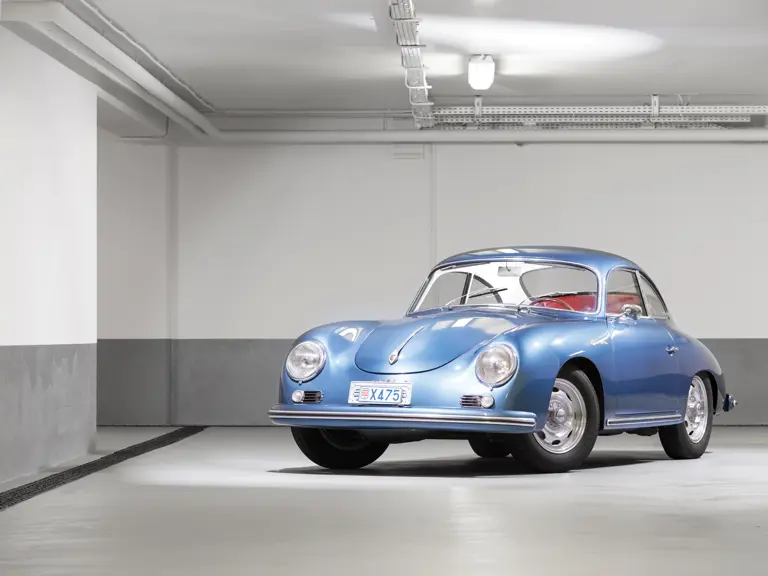
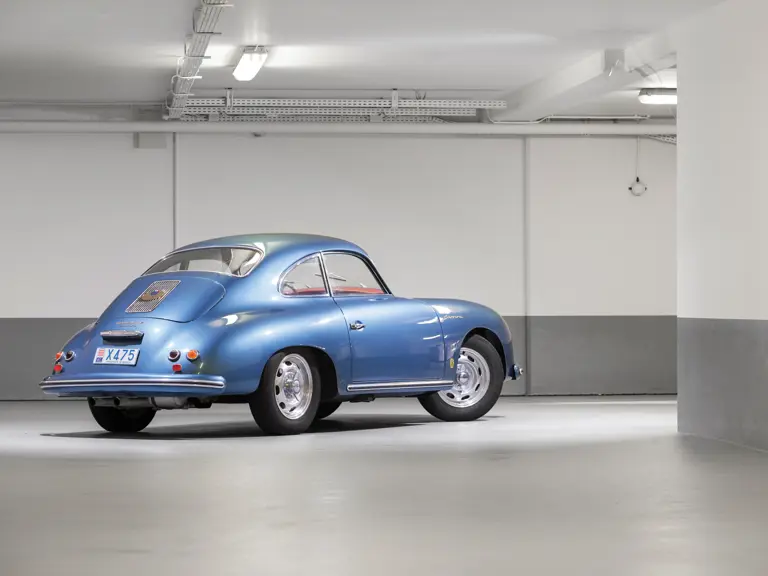
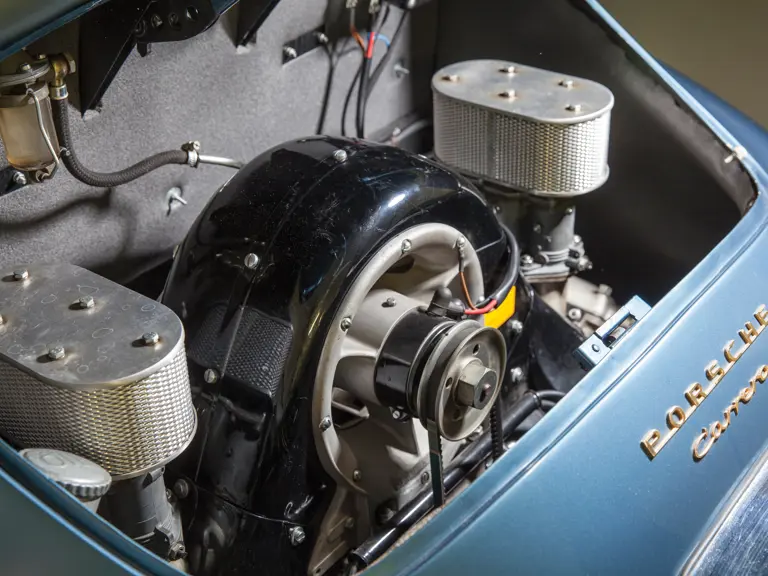
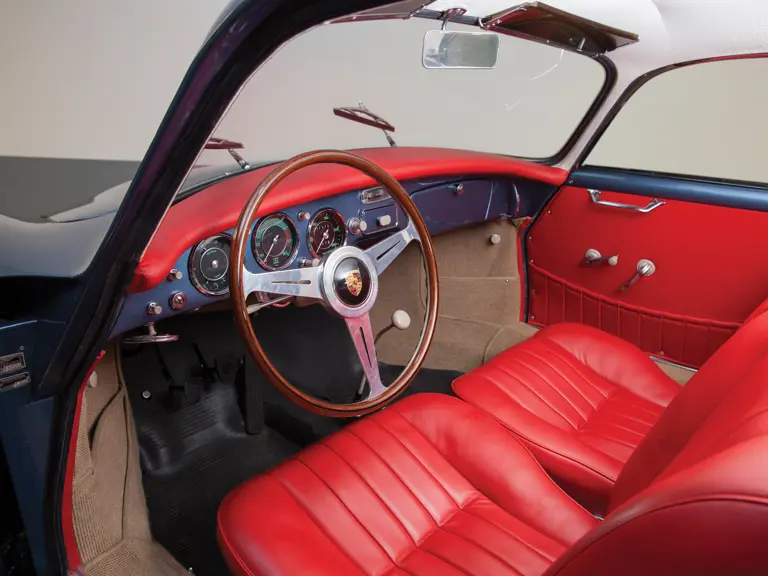
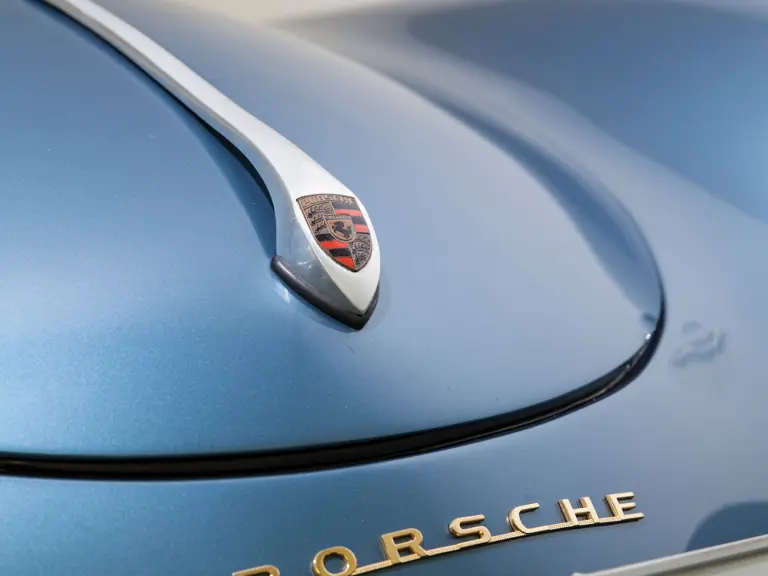
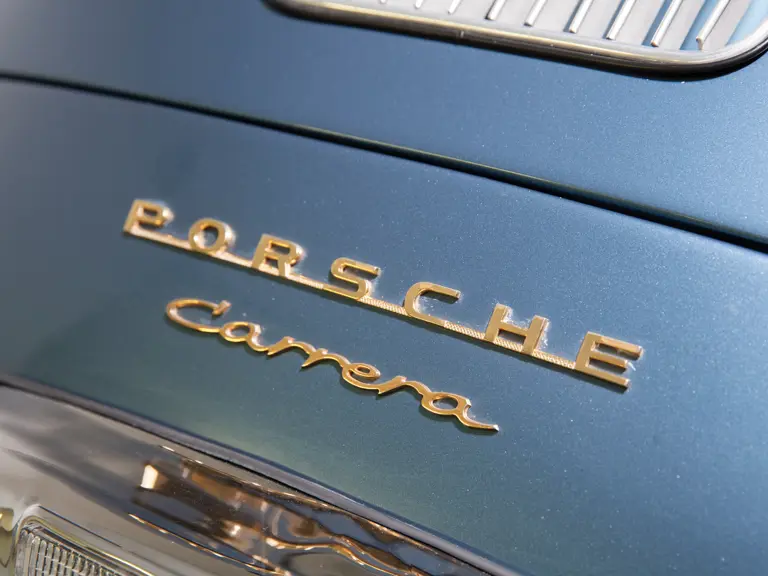

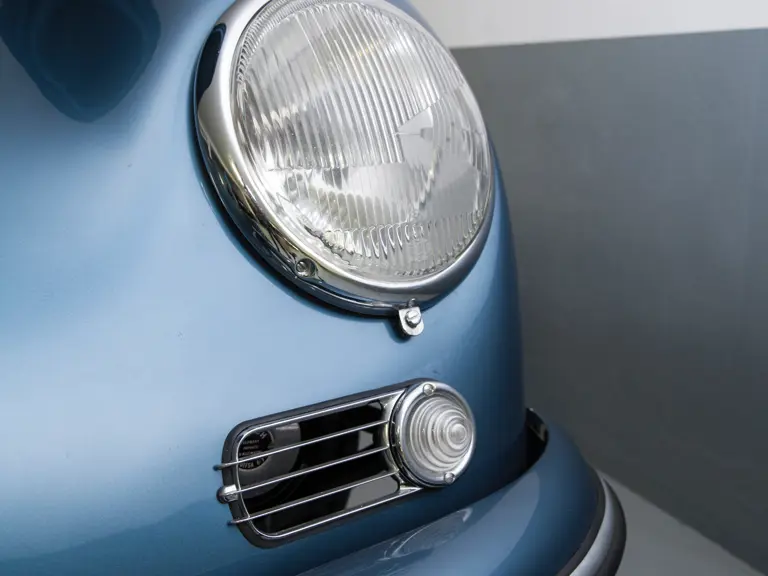
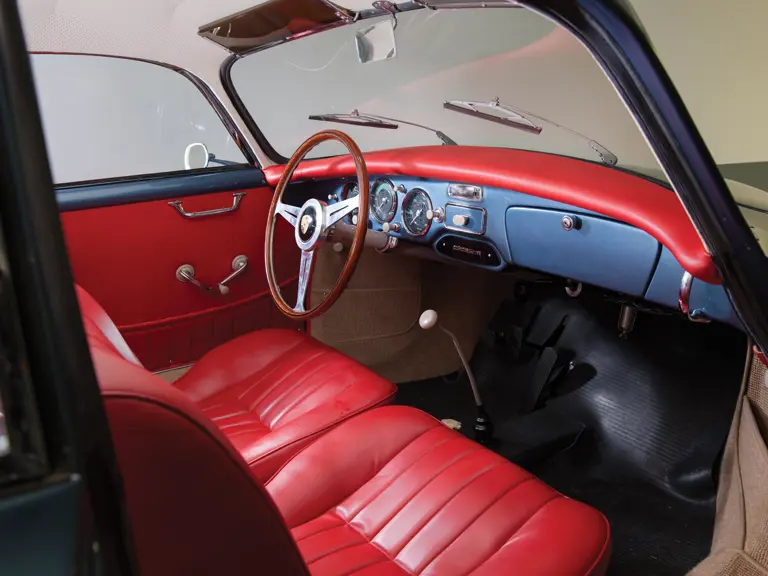
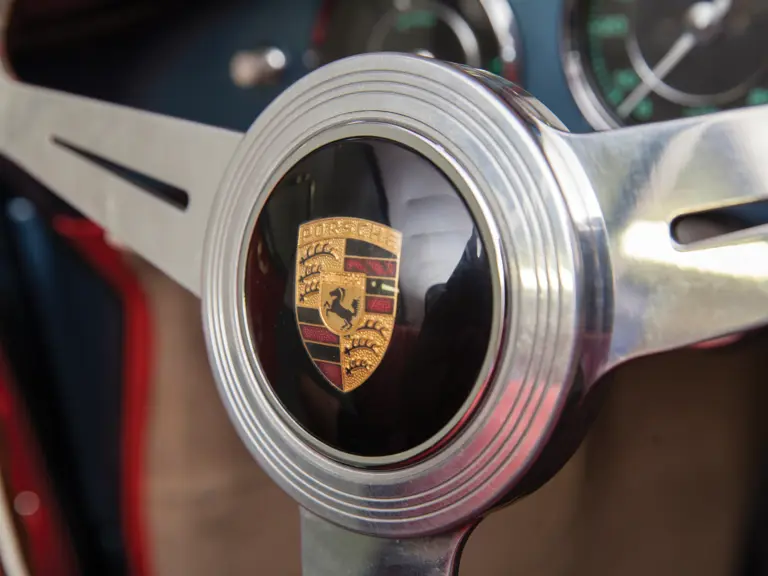


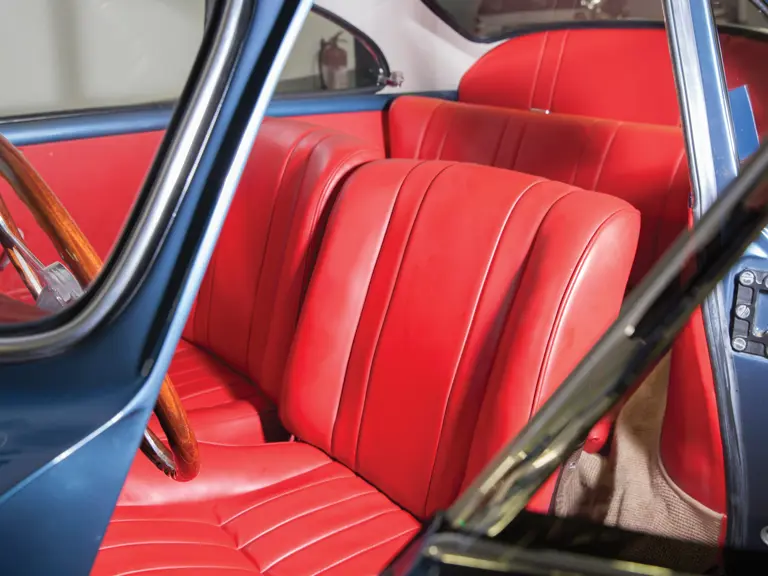
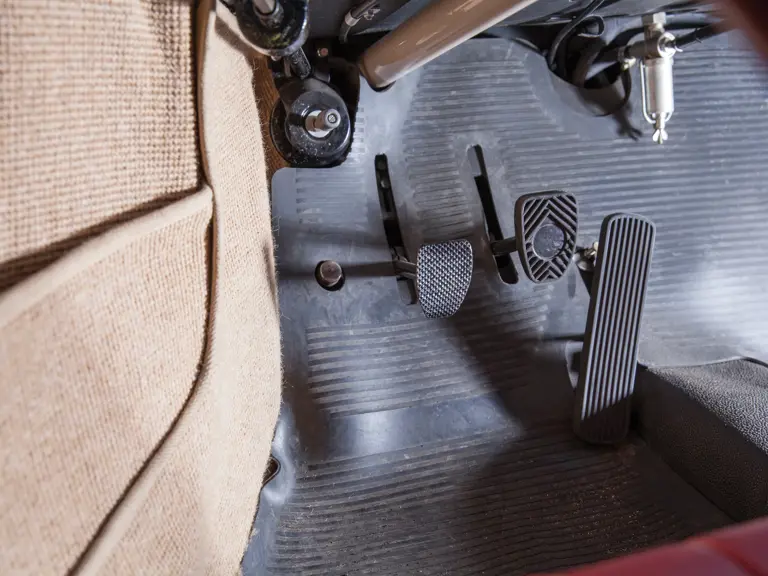
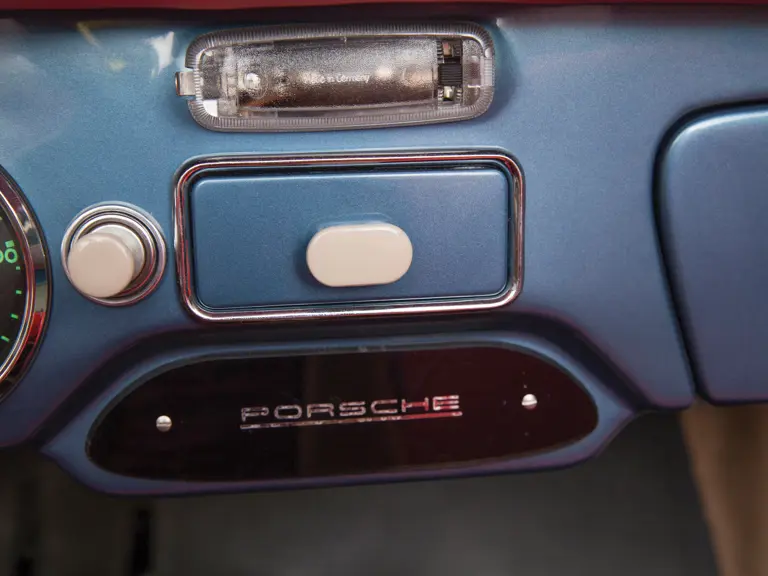
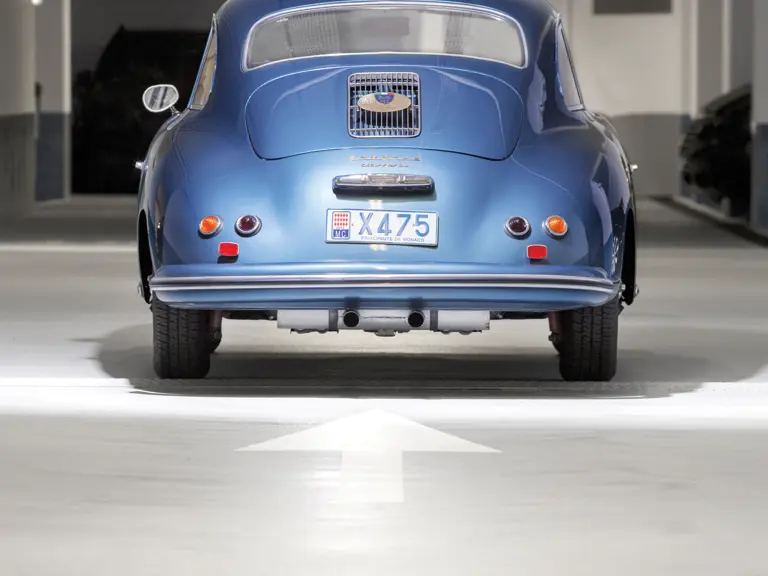
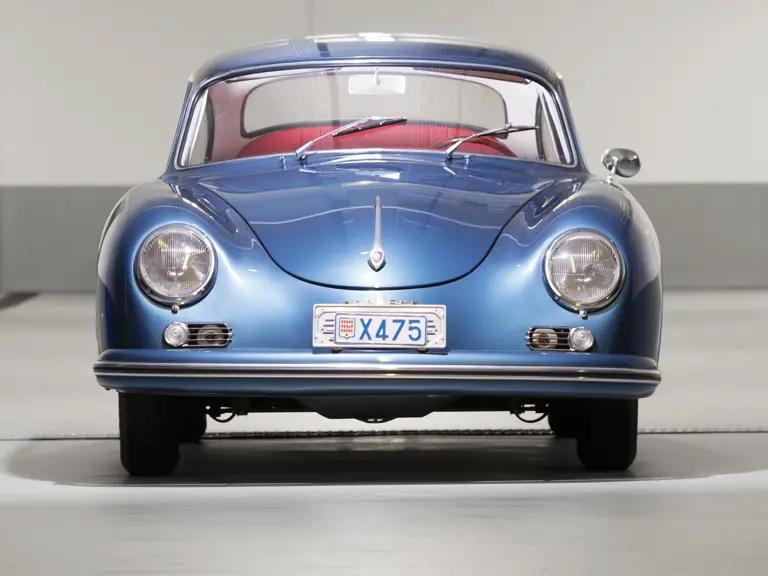
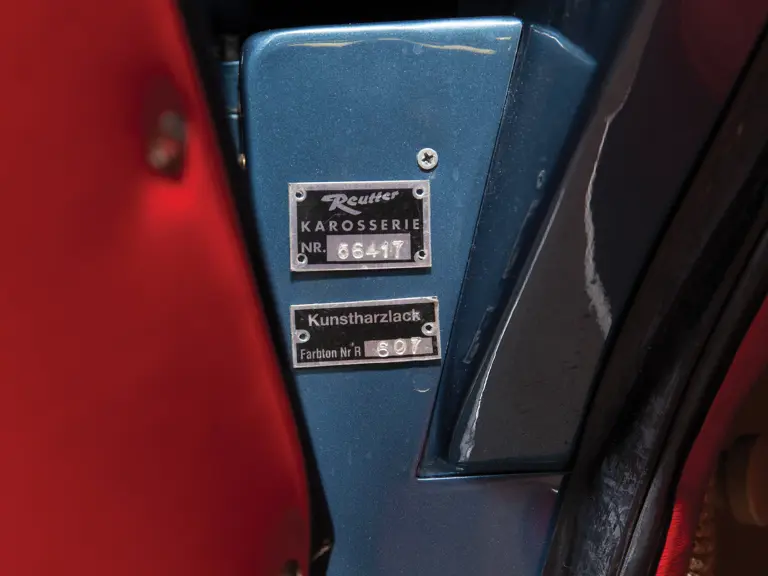
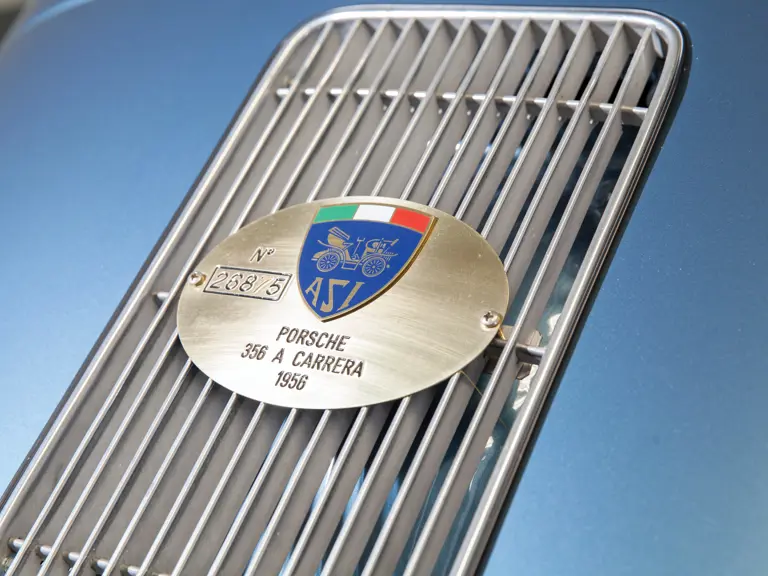
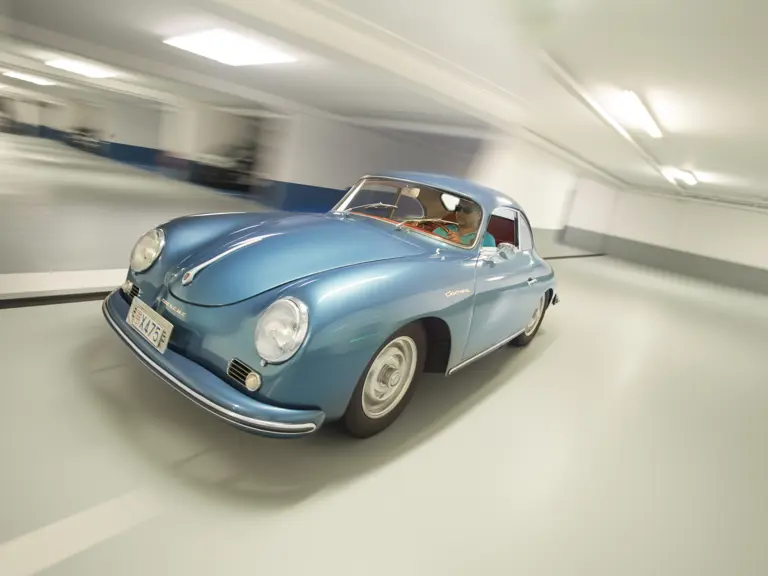
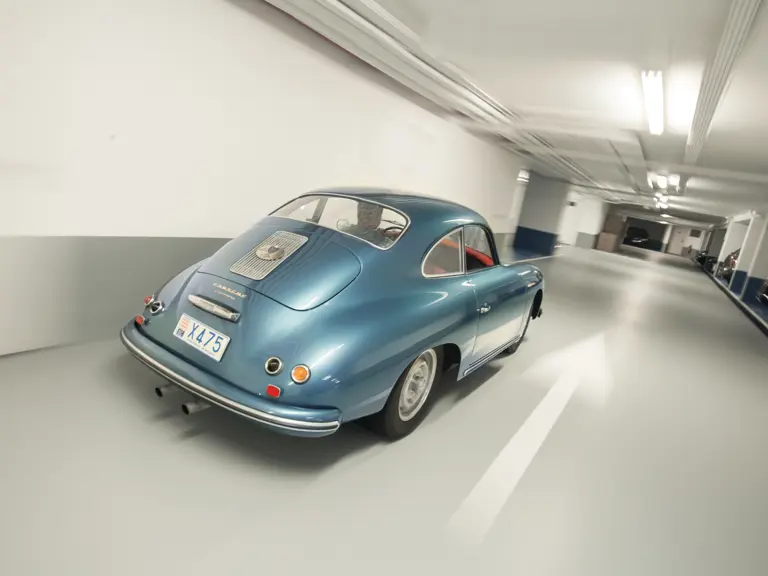


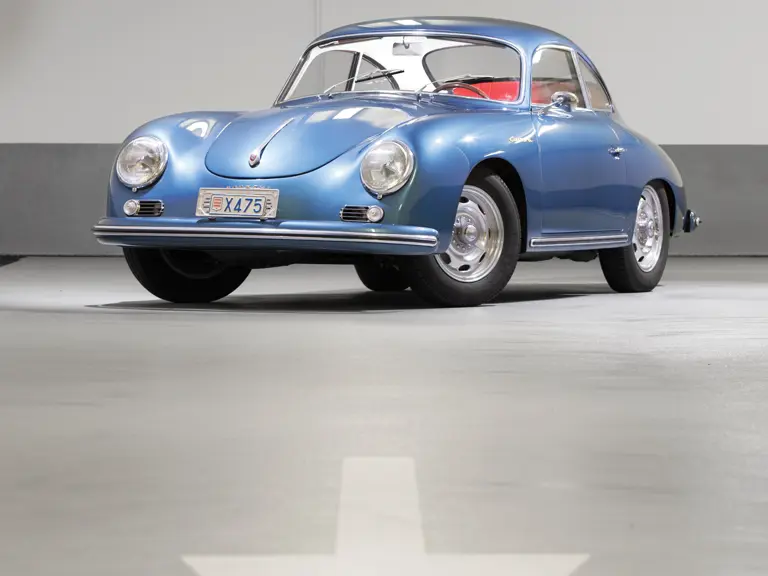
 | London, United Kingdom
| London, United Kingdom
